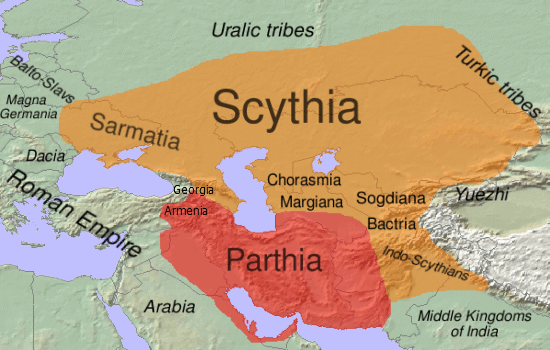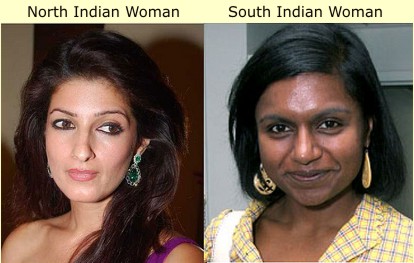A friend sent me this link to a “The Hindu” article that reviews results from genetic studies. Based on the latest big study from this year it concludes clearly that there was a (mostly male) migration around 4.000-4.500 years ago into India. Maybe the ‘Aryan question’ is hereby finally solved:
Thanks, excellent article. As a text scholar, it’s heartening to see that genetics is finally putting on secure ground the hypothesis originally proposed based on text-critical analysis, over a century ago.
An interesting detail is IMO that is was mostly men who migrated and thus might have seen themselves as the true ‘aryans’. Maybe it plays into the prominence of ‘fathers’ and ‘sons’, that makes the soteriology of the vedas, upanishads, and partly buddhism so male-oriented
Yes, Gimbutas’ theory is that the pre-Aryan culture in Europe was more matriarchal. That aspect of her findings, however, is disputed. I’m not sure whether there’s enough evidence, or sufficient work done, on the Indic scene to say whether the same is true there. If I was to guess, I’d say it was probably complicated.
Thanks for the pointer! That’s an interesting article. I recently discovered that “Saka” or “Sakya” means “Scythian,” which fits nicely with the genetic migration studies. Those early Persians really got around.
Here’s a spiffy map of Scythia and Parthia around 100BC, to give an idea of where things were situated:

Not so fast, this is a highly tenuous hypothesis.
Yes. The conclusion of the article cited states that: Indians are all mixed-race immigrants:
What is abundantly clear is that we are a multi-source civilization, not a single-source one, drawing its cultural impulses, its tradition and practices from a variety of lineages and migration histories. The Out of Africa immigrants, the pioneering, fearless explorers who discovered this land originally and settled in it and whose lineages still form the bedrock of our population; those who arrived later with a package of farming techniques and built the Indus Valley civilization whose cultural ideas and practices perhaps enrich much of our traditions today; those who arrived from East Asia, probably bringing with them the practice of rice cultivation and all that goes with it; those who came later with a language called Sanskrit and its associated beliefs and practices and reshaped our society in fundamental ways; and those who came even later for trade or for conquest and chose to stay, all have mingled and contributed to this civilization we call Indian. We are all migrants.
The article may be outdated because the out of africa theory is currently debated by the multiregional theory, recent scientific discoveries (the huge genome project )making it more probable at the moment.
As for Indians, I am no expert in ancient migrations but from what I remember, there are 2 types of indians. There are the norther arian ones that we spoke about already and there are the Dravidian people in south of india: Dravidian peoples - Wikipedia
I noticed 3 scenarios for the origins of Darvidians are presented in the wiki article but the accepted one is the 3rd one, a migration of ancient europeans 3000-4000 BC. They are genetically caucasian, only their skin color is different due to living there for a long time. Their facial features, bone structure, blood types, etc. are caucasian. Same as greeks, spaniards, arabs, ethipians and somalians are also caucasian despite their skin color differing due to living in hot climate for a long time, ethiopians and somalians being totally black.
Therefore, all Indians are relatively recent indo-europeans who migrated there in 2 waves, the ones in the south having darker skin due to migrating there earlier and settling in the south of india. 
The ones in the north were called Aryans because that meant “Iranian”. They got to be the higher cast due to many reasons. First, they were part of a bigger, indo-european civilization witch makes you more advanced. In the same way empires around Romania were much more advanced than Romania due to simply being a bigger empire wich is how civlization and advancement is born. The second reason had to do with mongols who conquered India at one point and were lighter skinned. They got to be the ruling class wherever they conquered something. And this combination of factors lead to the current skin-color based caste system.
This is why, as others have said in this topic, skin color was not as important in the cast system of ancient india as it is now since a big part in this was played by the mongol invasion.
In the suttas, we see that Indians living in “the middle countries” were considered civilized and the ones living at the outskirts were considered “uncultured barbarians”. (somewhere in chapter 5 of SN) This is clearly due to the second wave of indo-europeans being part of the large indo-european civilization. But I don’t know why they chose to settle in middle india and not so much in the outskirts having access to the sea. Probably because sea trade was not existent in that period and they just settled along the river because that was the best place to do agriculture.
NOTE: “The outskirs” does not refer only to southern india but also to the west coast and also to the east coast of india, witch confirms my theory that they settled along the river to do aggriculture and not because of proximity to the bigger indo-european civilization. The west coast of india was closer geographically but we know they were extremely violent from many suttas, including the one where Buddha questions a monk weather he is ready to go spread the dhamma in such a place.
I wouldn’t quote Wikipedia in such cases, as it has been shown to be contaminated by systemic racial bias.
That is why I mentioned studies do not agree with those 3 hypothesis quoted in that article and the accepted consensus is the 3rd one. South indians are genetically caucasian, same as ethiopians and somalians are caucasian. Skin color does not equal race.
I know about the prejudice against south indians since gypsies (who came from the lowest caste, therefore probably south indians) are a much hated minority in my country and in europe in general and that prejudice + skin color might determine people to make all kinds of unscientific claims about them. But racially, gypsies are caucasian, south indians are caucasian. That is what science says. Therefore the 3rd theory from that wikipedia article is the accepted one, with south indians being indo-europeans who migrated there 3000-4000 BC.
Science says there is no such thing as race. If you go back far enough, then we all have common ancestors. You are my cousin. Everyone on this forum is distantly related by blood and genes. So how can there be different races?
Same as there are different breeeds of dogs. If you go back enough in time, they all come from domesticated wolfs. Therefore, how can there be such a thing as german shepard or chiuaua or tibetan mastiff ? Do you hate ciuauas for not being as big and smart as a german shepard ? Do you hate chickens for being different than eagles ? Do you hate Mike Tyson for being stronger than you? Accepting there are differences in the world does not force you to hate that thing that is different. It is your choice if you want to hate it or not. I don’t think we should censor science due to that argument because it is a flawed argument. Hatred comes from character problems, not from the fact that differences exist in this world. I just presented what science says: that south indians are caucasian as a race, same as ethiopians and somalians. If the word “race” is disturbing due to your country history then we can use “breed”. Science does not say there are different species of humans, such as homo erectus or homo denisovan or neanthertal species existed in the past. The only species that exists today is homo sapies, by “race” they mean “breed” not “species”. And skin color does not equal different race/breed. That would be like saying a black german shepard is a different breed than a slightly brown one. In the same way, south indians are not a different race/breed than north indians. A much, much longer period of isolation and independent development would have been needed for south indians to be considered a different race/breed.
The point I was trying to make is that south indians migrated there 3000-4000 years ago and are of indo-european descent, while also explaining the skin color based caste system of today due to the mongol invasion. This is confirmed by genetic research. I don’t want to get into that kind of political debate about wheathere there is any kind of difference between people or not.
PS: India is today the nr 1 most racist country in the world, 52% of Indians list “a person of another race” on the list of persons who they would not like to have as a neighbor. And by race they don’t even mean it in the scienficial sense but in the skin color sense witch, as I have shown, is not backed up by science. It is probably impossible to convince people with high levels o racism to accept a person of another race as their neighbor, therefore pointing out they are not even of another race would be a strong argument even for a hardcore racist to loosen up a little. The caste system is a big reason of shame for Indian society and is also economically inefficient in modern times, making them all suffer.
The race question is misleading when it comes to the EBT in my opinion. It’s not about if people are the same originally or not (I hope we can agree that the mind is basically the same, which is a necessary assumption of buddhism anyway).
From what I recall the debate was driven by different forces. The old vedic texts imply more or less that there was a migration. For example soma, the essential plant for the vedic rituals, has been lost and needed to be substituted, and many other hints like this. The texts point in one direction. The language connections of vedic and other languages are another clear hint.
Archeology not so much. Afaik archaeologists would have expected more definite signs of technological artifacts at different regions, so they couldn’t back up the theory of dramatic migration.
An Indian national sentiment seems to be protective of the Indian heritage with the ‘We are not immigrants, we were always here’-kind of idea. This had little to do with science but was trying to cherry-pick scientific findings to back up an ideological agenda.
…this is what I recall at least from the top of my head about the debate. When it comes to the EBT I don’t think the question is essential actually. It’s more important for Vedic studies. But the perceived history, even at the time of the Buddha, must have been used in society, e.g. to explain diversity or justify privileges. So to me at least the ‘aryan question’ is just a puzzle piece to re-contextualize the times of the EBT and not much more.
An interesting read on this topic would be this one: